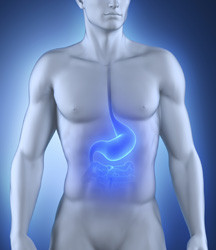Organoids to study gastric infections
The mucosal surfaces of our stomach and gut are in constant contact with bacteria and viruses. Whether they are commensal bacteria with a beneficial impact or pathogens, we need to be able to study host response to these microorganisms. However, this is hampered by a lack of suitable model systems. A recently developed methodology has enabled the generation of 3D structures, known as organoids, using stem cells. Organoids can be derived from many organs, such as the stomach, small intestine or colon. They resemble mature epithelium of the tissue they are generated from and provide an ideal in vitro tool for studying infectious pathogens such as Helicobacter pylori. Scientists on the EU-funded 'Organoids as infection model' (INFO) project set out to study H. pylori using gastric epithelial organoids. For this purpose, they obtained normal human tissue and cultured it under specific conditions to generate 3D cysts that resemble the human stomach. To mimic the human infection where H. pylori resides in the stomach lumen, scientists microinjected the bacteria into the organoid cysts. Electron-microscopy studies indicated that although the majority of bacteria were maintained in the organoid lumen, some established a tight interaction with epithelial cells. Analysis of the cellular gene expression response after just two hours of infection showed an activation of the inflammatory signalling pathway NF-kappaB. Subsequent differentiation of these organoids into gland or pit-type cells provided a different response to infection with potential significant medical implications. Furthermore, the consortium successfully expanded the organoid technique for gastric tumours. By obtaining cancer epithelial cells from patients, they managed to grow organoid cultures that should prove useful for anticancer drug testing. Taken together, the tools and observations resulting from INFO work will help understand host-pathogen interactions in health and disease. In addition to providing new insight into gastric pathologies, organoid cultures should aid the development of new therapies, including regenerative medicine.







